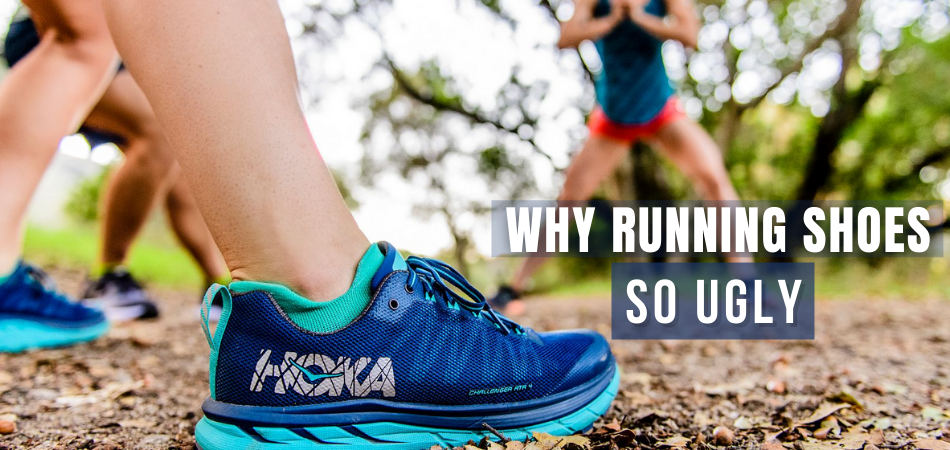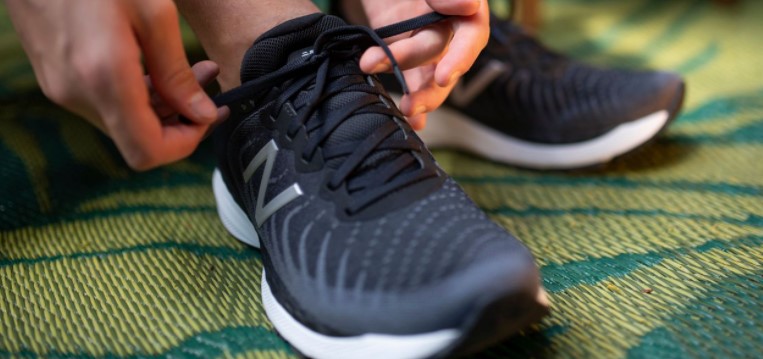Running shoes are a necessity for any active lifestyle. They assist you in staying active throughout any weather or terrain. Whether it is on a dusty summer morning pavement or in a wet snowy winter asphalt. They are generally intended to remain necessary and, more importantly, assist in the prevention of injuries. As far as running and athletics are concerned, it is an absolute must-have requirement.
One major criticism, on the other hand, is that this running shoes’ form is not particularly attractive. They all have a similar profile to some extent, with a particularly obnoxious shape. The colors are vibrant, and the majority of them are embellished with some sort of busy pattern on their exterior.
But, really, do they have to be that unsightly? Is it possible for running shoemakers to create a significantly bigger apparel room and present something comfy while also being aesthetically attractive?
Why Are Running Shoes So Ugly?
There are several key points as to why running shoes are still so ugly even through all the advancements this world has already have witnessed. First is the market of buyers and consumers, second is the functionality, while third is the economy and practicality.
Read on to know more about these key points mentioned…
The first reason is the market of buyers and consumers. Consumers are those who use the running shoes, while buyers refer to those wholesalers who buy from the manufacturers. Yes, we are not the customers of a running shoe manufacturer; rather, wholesaler buyers are. They want to see success, and they measure success by the number of sales that are generated.
According to this metric, what designs have been made available has been effective and saleable. Individual shoe prices continue to rise, while the market as a whole grew to $3.2 billion in 2016, representing a 40% increase since 2010. That pair of vibrant shoes are easily selling off. “Both consumers and buyers are completely immersed in the present,” says Bennett Grimes, product line manager for Brooks’ footwear products.
The second factor is that the appearance of a particular shoe is considered to be only almost the least considered by the individual buyer. When people fit their feet in a shoe model that suits well for them, they are more likely to cling to it. There are at least a dozen different versions of the model I currently wear.
I went to a running store five or six years ago and jogged for 30 seconds on a treadmill. I felt great afterward. Following that, someone recommended a model that would be a good match for my running style. I bought it because it looked good on me, and I’ve been wearing it for more than a decade now. Would it be finer if they are a little more aesthetic? Definitely. However, they are still in good shape, and I am far more concerned with whether or not I will be injured. For the time being, I’m sticking with the same pair. Many footwear analysts believe that this is standard practice throughout the industry. Runners who have settled on a brand and model of the shoe are more likely to stick with that brand and model in the future.
The third factor to this is the cost. Running shoes are priced according to a “good-better-best” model, with prices ranging from about $80 to $120 or more. Due to the fact that standing out on a wall is a top consideration, even the most basic of shoes must have a little flair in the form of sewn-on or incorporated into the mold logos indicating the technology that was used in its creation. As the current price rises, the number of patches, tint contours, and logo design increases, all in the pursuit of a higher perceived value for the consumer.
How To Keep Your Running Shoes Looking Fresh
Unfortunately, no matter how well-made a running shoe is, it will inevitably become worn out and ineffective. Because of this, the glove-like brace will become loose, the springy action will become squishy and sluggish, and the rubber sole will lose its tread and begin to wear down to the bottom of the shoe. It’s a good thing that there are steps you can take to add some more hundreds in the mileage of your pair. All it takes is some more knowledge and steps to significantly increase the lifespan of your shoes. We’ve compiled a few easy ways to ensure you extend the most life out of your running pairs. Read on for more information.
1. Remove them with care
Take your time to undo and untie the laces of your shoes before removing them from the rack. However, while taking them off with your other foot by slipping may be more expedient, the stretch puts great tension on the heel collar and laces. The result is that the shoes will begin to stretch out and lose their shape, which means that after a while, the shoe will simply no longer fit as well.
2. Use it exclusively for running
While you can get tempted to wear the comfort of your pair throughout the day, it’s best to keep them solely for running purposes only. If you use them as a casual daily shoe, the cushioning materials will degrade much more quickly, and you will get fewer miles out of them as a result.
3. Do not use them for cross-training purposes
Your running shoes are made to allow you to move in a straight line from heel to toe. Other types of exercise, such as boot camp-style workouts that require a lot of side-to-side motion, will put additional strain on the shoes, causing them to wear out faster and become more damaged as a result.
There are also other specifically designed shoes for certain conditions such as these Shoes Specially Made For Running On Grass
4.Keep them at moderate temperatures
Excessive exposure to heat can cause the glue that holds your shoe together to become damaged. Wearing off or delamination of parts of the shoe is possible as a result of this. Heat exposure may also cause the upper material to shrink, resulting in a change in the fit of the shoes.
If you’re wondering what we imply by “excessive exposure to heat,” consider the fact that you shouldn’t store your shoes in temperatures where you’d be uncomfortable. For example, would you spend a couple of hours in the trunk of your car if the temperature outside was 100 degrees Fahrenheit? Then you should probably avoid storing your shoes in that area as well.
5. Thoroughly clean and dry the items
Running shoes will not necessarily break down faster if they are not kept clean, but they will break down more quickly if they are cleaned and dried incorrectly. As previously stated, shoes do not fare well when subjected to high temperatures. Consequently, it is critical to allow your running shoes to dry completely outside rather than putting them in the dryer or placing them near a heater vent.
Instead, remove the sock liner from your shoe and stuff a few sheets of newspaper into the cavity to help absorb moisture and speed up the drying process. You can also use tissue paper or coffee filters as substitutes for newspapers if you don’t have access to one.
6. Have other pairs for alternate use
To a certain extent, the majority of running shoes are cushioned with foam. As you run, the foam in your shoe naturally compresses, absorbing shock and allowing you to maintain a fresh feeling. If you wear your shoes on a regular basis for a number of days in a row, the foam will begin to absorb less and less shock as it becomes more permanently compressed over time.
Rotate your primary shoes with at least one other pair of shoes to ensure that the cushioning in your shoes last for a longer period of time. This will give each pair of shoes some breathing room to decompress and allow the foam to return to its original shape and size.
When you rotate your running shoes, you give them a chance to dry out, which is especially important if you live in a wet or humid climate where your shoes are frequently saturated.
Frequently Asked Questions (FAQs)
Did you ever find blisters or discomfort hampering the fun of your running? If so, you may want to consider the extra mile these questions could bring you
Do insoles have an impact on the performance of shoes?
Stock insoles in quality shoes and boots are typically made of low-cost materials to fill in the gaps. OEM insoles or footwear inserts can help you customize the fit, support, and comfort of your footwear to your specific foot type.
What are the ways I could tie my running shoelaces?
The following are lacing techniques that you should be familiar with as a runner:
- Runner’s Loop
- Window lacing
- Tighter Knot
When would I need a new pair?
Your go-to pair of running shoes has been by your side through all of the happy miles, as well as the difficult ones, which can make saying goodbye difficult at times. But the wearing of shoes is inevitable; knowing when to discard them and replace them with a new pair is critical to your health and convenience. In general, your running shoes have a lifespan of 300–500 miles, depending on how much you run.
Conclusion
You will encounter a lot of these shocking, vibrant shoes, and you will possibly start to wonder if this isn’t just a midnight bar wager that has skimped on everything when it comes to appearances and style. The trend began several years ago when low-level designers competed to outdo each other’s aesthetically displeasing model. With time, it appears that most of these companies have succeeded in producing shockingly fast deals and, as a result, even uglier designs. Buyers have also been preoccupied with aspects such as comfort, support, and sturdiness rather than the actual appearance of the shoe.



